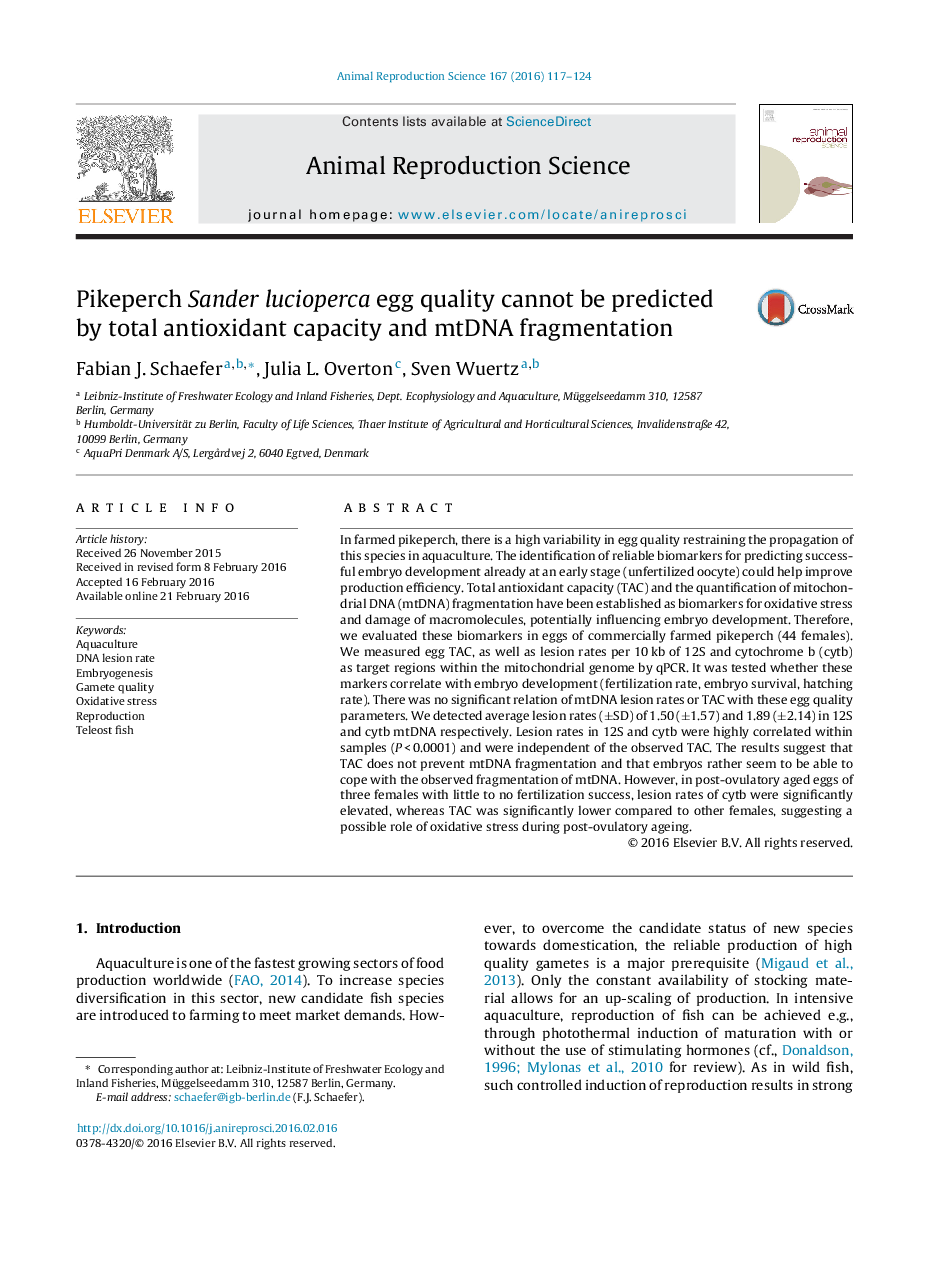| Article ID | Journal | Published Year | Pages | File Type |
|---|---|---|---|---|
| 2072617 | Animal Reproduction Science | 2016 | 8 Pages |
In farmed pikeperch, there is a high variability in egg quality restraining the propagation of this species in aquaculture. The identification of reliable biomarkers for predicting successful embryo development already at an early stage (unfertilized oocyte) could help improve production efficiency. Total antioxidant capacity (TAC) and the quantification of mitochondrial DNA (mtDNA) fragmentation have been established as biomarkers for oxidative stress and damage of macromolecules, potentially influencing embryo development. Therefore, we evaluated these biomarkers in eggs of commercially farmed pikeperch (44 females). We measured egg TAC, as well as lesion rates per 10 kb of 12S and cytochrome b (cytb) as target regions within the mitochondrial genome by qPCR. It was tested whether these markers correlate with embryo development (fertilization rate, embryo survival, hatching rate). There was no significant relation of mtDNA lesion rates or TAC with these egg quality parameters. We detected average lesion rates (±SD) of 1.50 (±1.57) and 1.89 (±2.14) in 12S and cytb mtDNA respectively. Lesion rates in 12S and cytb were highly correlated within samples (P < 0.0001) and were independent of the observed TAC. The results suggest that TAC does not prevent mtDNA fragmentation and that embryos rather seem to be able to cope with the observed fragmentation of mtDNA. However, in post-ovulatory aged eggs of three females with little to no fertilization success, lesion rates of cytb were significantly elevated, whereas TAC was significantly lower compared to other females, suggesting a possible role of oxidative stress during post-ovulatory ageing.
